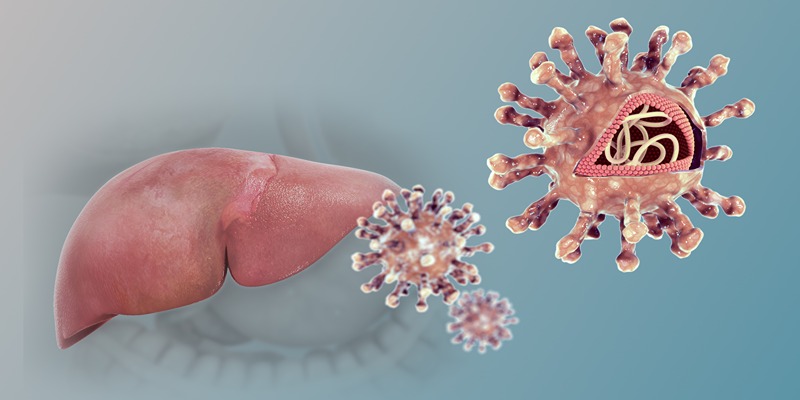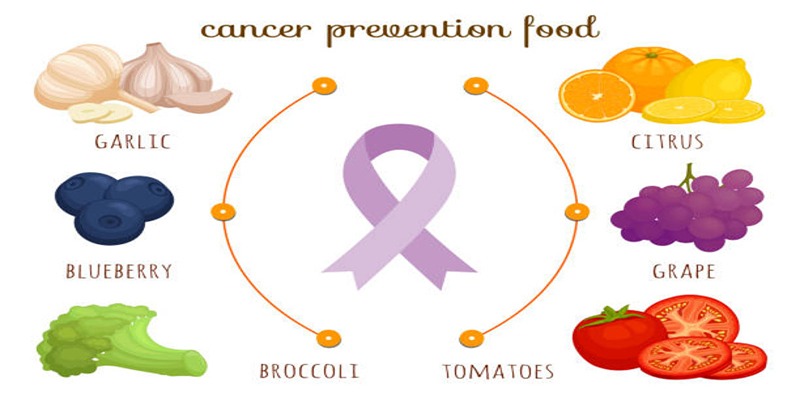It is one of many hepatitis viruses that cause inflammation of the liver and make it less efficient at its job. In most cases, Hepatitis A does not result in chronic liver disease, although people may still have serious consequences. Ingestion of contaminated food or drink, or prolonged intimate contact with an infected person, are the primary routes of transmission. In most cases, the symptoms of this virus are severe, but they are treatable and will go away with good hygiene and medical attention.
Causes and Transmission of Hepatitis A
To stop the spread of Hepatitis A and protect the public's health, knowing how the virus is propagated is essential. Because the virus is most commonly transmitted by the fecal-oral route, it is crucial that individuals and communities sustain rigorous cleanliness practices.
How is Hepatitis A Transmitted?
Ingestion of tainted food or water is the main vector for the development of hepatitis A. Inadequate sanitation or sloppy hygiene are usually at blame for the contamination. Transmission is prevalent through eating raw or undercooked seafood, having close contact with an infected person, or drinking water that is contaminated with the disease, highlighting the importance of safe food and water.
Who is at Risk?
The risk of getting Hepatitis A is higher in some populations. Those who engage in high-risk behaviors, such as drug use, frequent international travel, or specific occupations are at a higher chance of contracting the disease. Those who are susceptible should seriously consider immunization and strictly follow preventative measures. In areas where Hepatitis A is common, these precautions are especially important for preserving the health of the local populace.

Identifying Hepatitis A Symptoms
Understanding the signs of Hepatitis A is crucial for early diagnosis and treatment. This infection can manifest itself in a wide spectrum of severity, depending on a number of factors such as the host's age and general condition.
Early Symptoms
Symptoms of hepatitis A in its early stages include weakness, nausea, and abdominal pain, as well as a loss of appetite and a little higher than normal body temperature. Jaundice is another noticeable sign since it causes a yellowing of the skin and eyes. Additional symptoms of this virus include vomiting, fever, and diarrhea that is pale in comparison to the urine. In order to effectively manage the condition and stop the transmission of the virus, early recognition of these symptoms is vital in obtaining immediate and appropriate medical assistance. Swift action is crucial in limiting the spread of the disease and safeguarding the health and well-being of the individual and the community as a whole, as it allows for early intervention and treatment and reduces the likelihood of extensive outbreaks.
Progression of the Disease
Hepatitis A can cause acute liver failure and other serious complications if not treated in a timely manner, especially in the elderly and those with prior liver disorders. Rarely, this progression can be fatal, requiring emergency medical attention and perhaps a liver transplant. Improved health outcomes and quality of life for the patient are a direct result of better monitoring of the condition and the ability to respond promptly to the emergence of any complications brought on by Hepatitis A.
Hepatitis A Diagnosis and Tests
Testing for Hepatitis Correct diagnosis is essential for providing effective treatment and management. It entails a battery of diagnostic procedures used to identify the virus and gauge the degree of liver damage.
Diagnosis Process
Blood tests that detect particular antibodies (anti-HAV) that the body develops in response to the Hepatitis A virus are the mainstay of Hepatitis A diagnosis. These exams are essential for distinguishing Hepatitis A from other viral hepatitis and illnesses with similar signs and symptoms. The severity and effect on liver function can also be assessed by doctors by reviewing the patient's clinical history and performing a physical exam.

Interpretation of Results
The existence of IgM anti-HAV antibodies, indicating a recent infection, is carefully interpreted by medical practitioners. The patient's well-being and the prevention of further transmission of the virus depend on the accuracy of the diagnosis of Hepatitis A, which is crucial in determining the appropriate treatment and management strategy.
Hepatitis A Treatment and Management
Available Treatments
Treatment for Hepatitis A primarily involves making sure the patient drinks enough water and gets enough rest. When a patient is vomiting, it is extremely important for them to drink enough fluids to prevent dehydration. A healthy diet is also essential for helping the liver heal. Hospitalization may be necessary to treat severe episodes of vomiting and dehydration with intravenous fluids.
Management of Symptoms
Hepatitis A symptom management is most effective when it combines medicine to reduce discomfort with behavioral changes that promote healing. Fever and pain can be treated with medication. Avoiding alcohol, eating a healthy, well-balanced diet, and staying away from hard activities are all crucial in helping the liver heal. In order to lessen the severity of symptoms, hasten recovery, and forestall the development of problems due to Hepatitis A infection, strict adherence to a well-planned care approach is essential.
Prevention of Hepatitis A
The key to limiting epidemics and safeguarding people's health is a focus on Hepatitis A prevention. Vaccination and strict cleanliness practices are two of the most common recommendations.
Vaccination
The vaccine against Hepatitis A is readily available and has a high rate of success in preventing the disease. It is advised for all children at the age of one and for adults who may be at risk, and is usually given in two doses to ensure lifelong immunity and protection against the virus.
Hygiene and Sanitation
The most important things you can do to stop the spread of Hepatitis A are to practice meticulous cleanliness and only consume uncontaminated food and drink. Practical measures to reduce exposure to Hepatitis A include frequent handwashing, proper food handling, and the use of purified or boiling water.
Conclusion
Knowing how to prevent, recognize, and treat hepatitis. Food and water contamination are the primary vectors for disease transmission, making it all the more important to practice good hygiene and only use clean supplies. Jaundice and stomach pain are early signs that need to be checked out right away. Protecting individual and public health against Hepatitis A requires not only the extremely successful vaccine, but also the observance of preventative hygiene practices. In summary, the most effective means of fighting this infectious disease are education, immunization, and other preventative measures.












